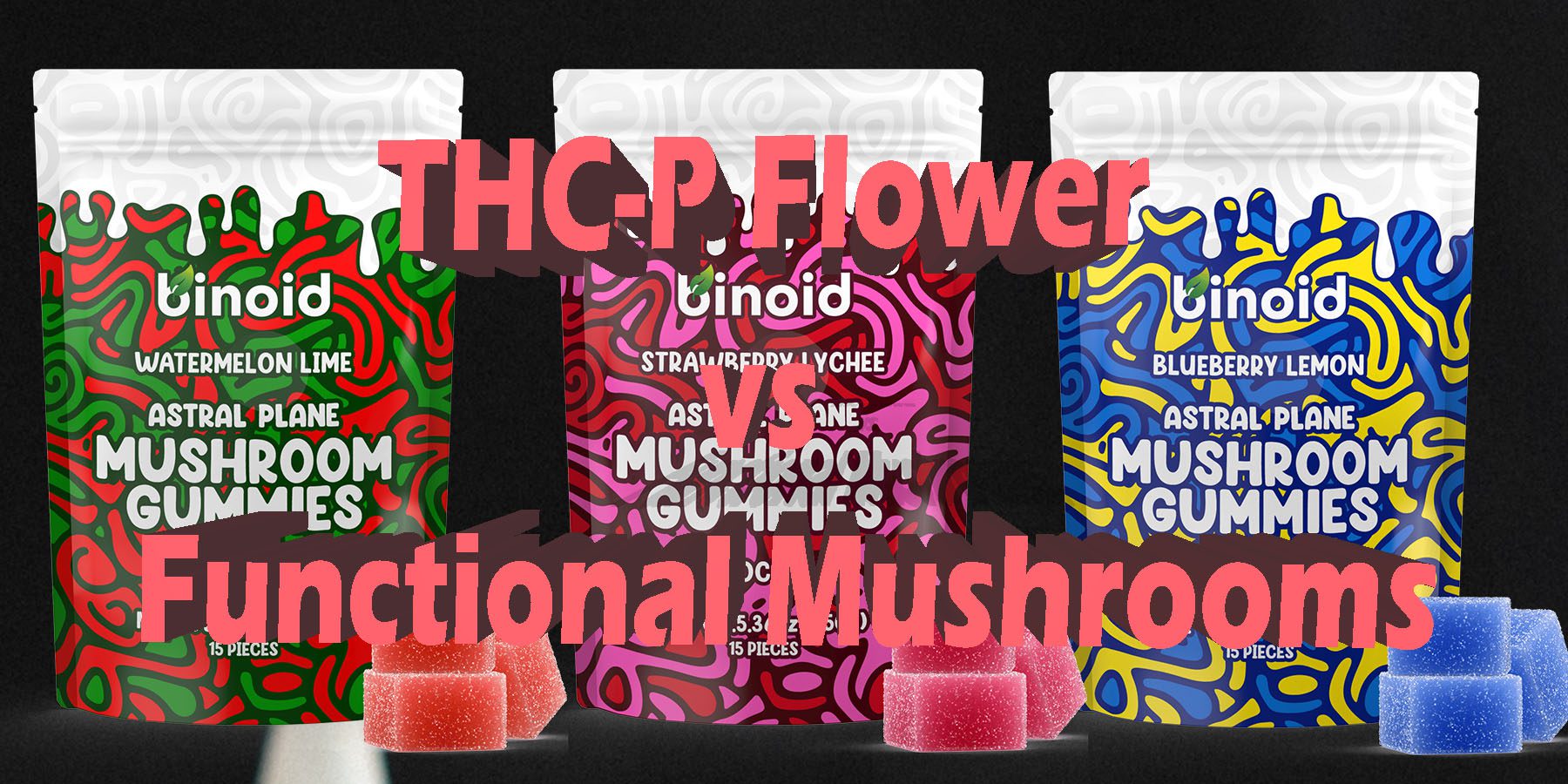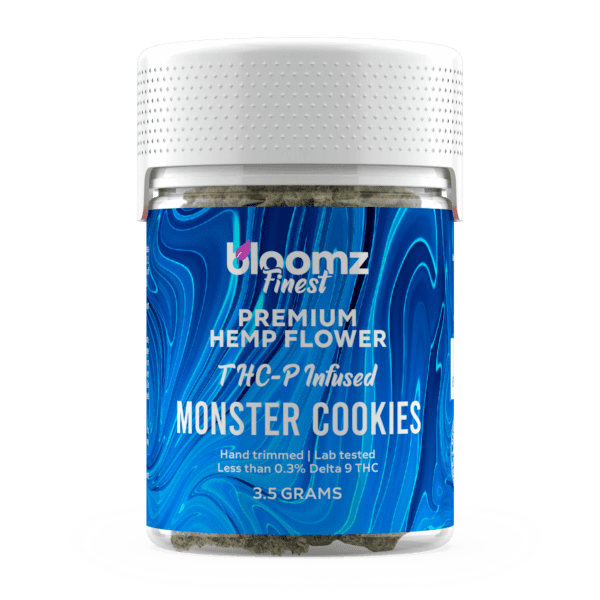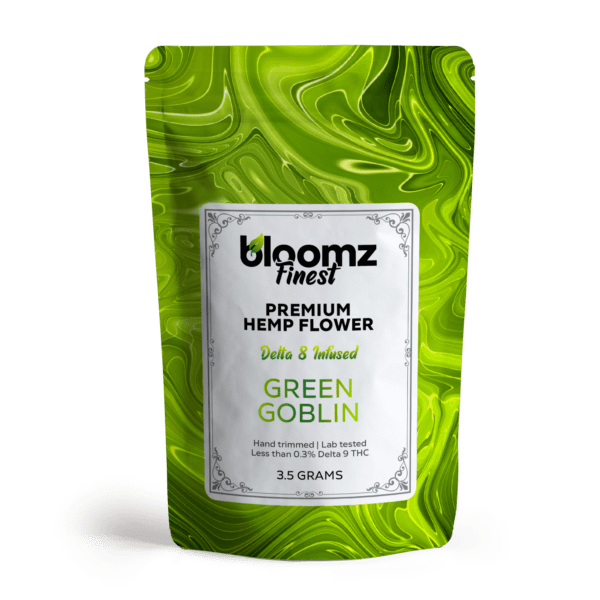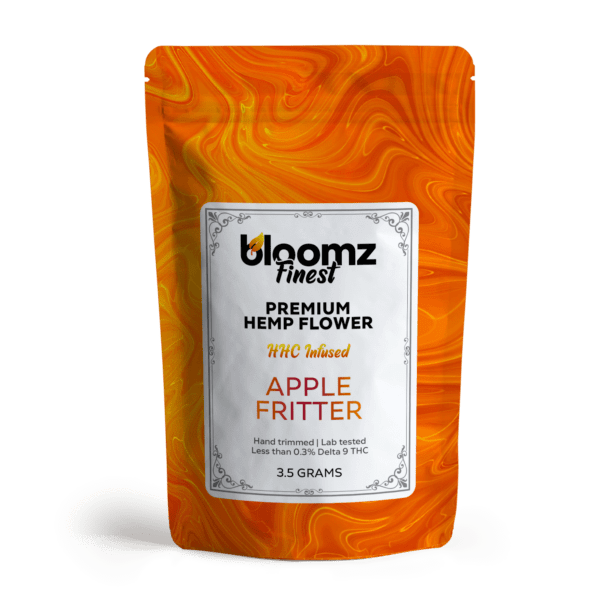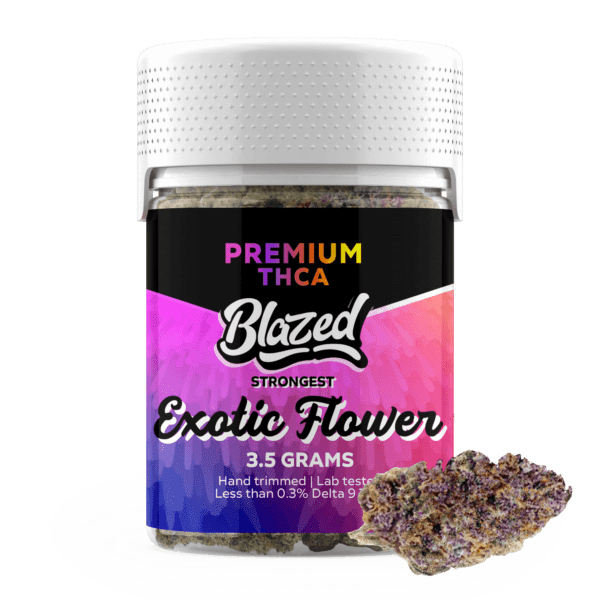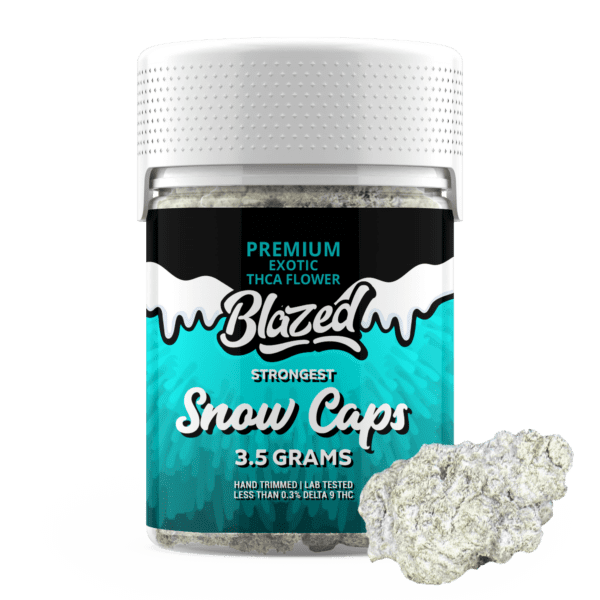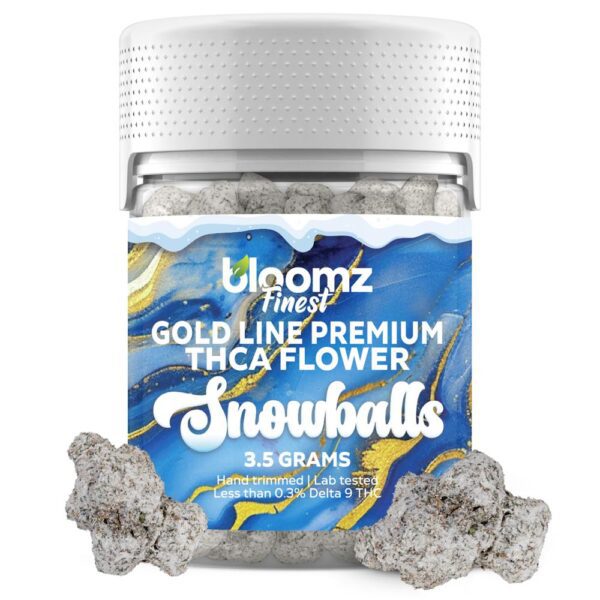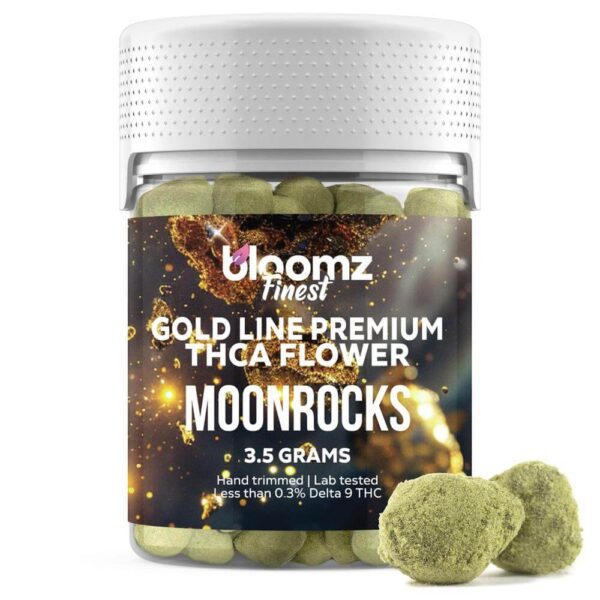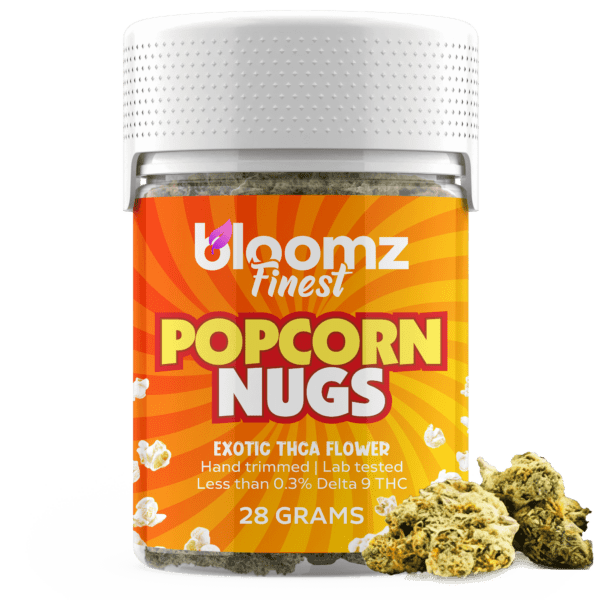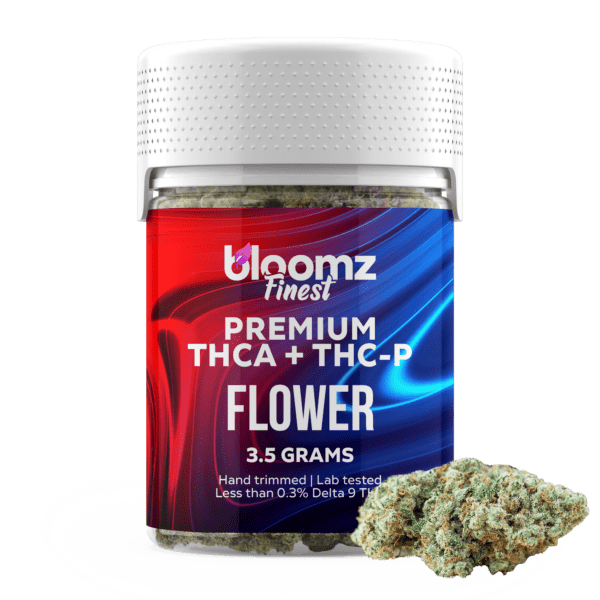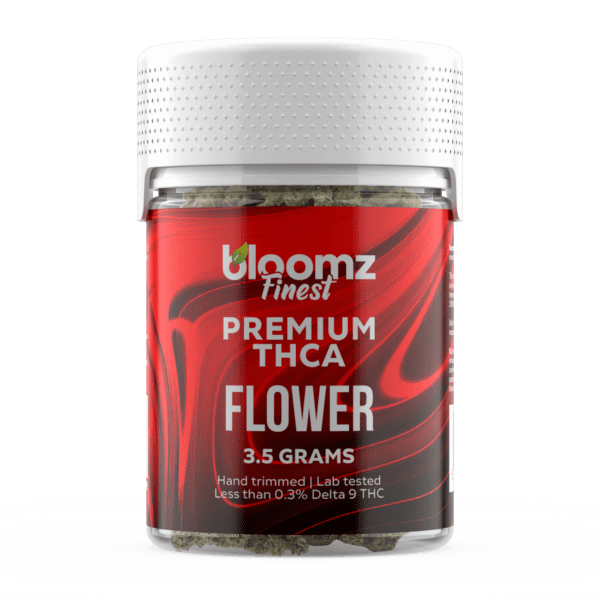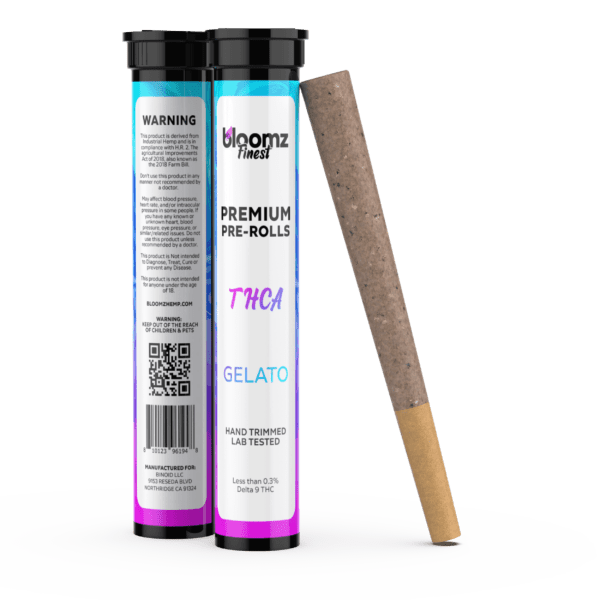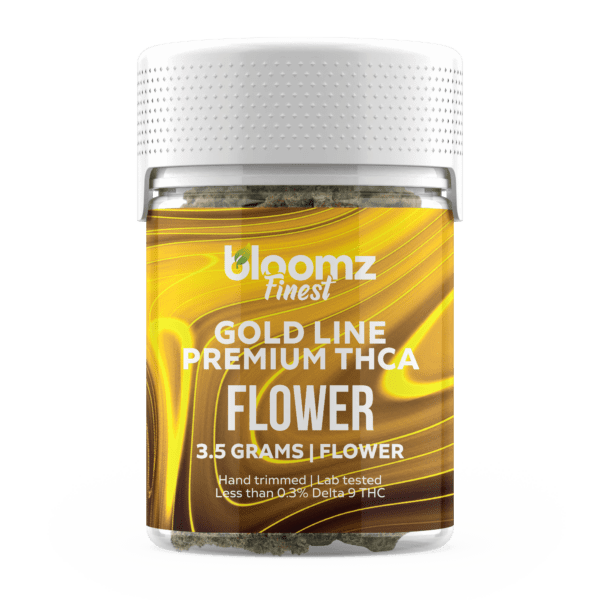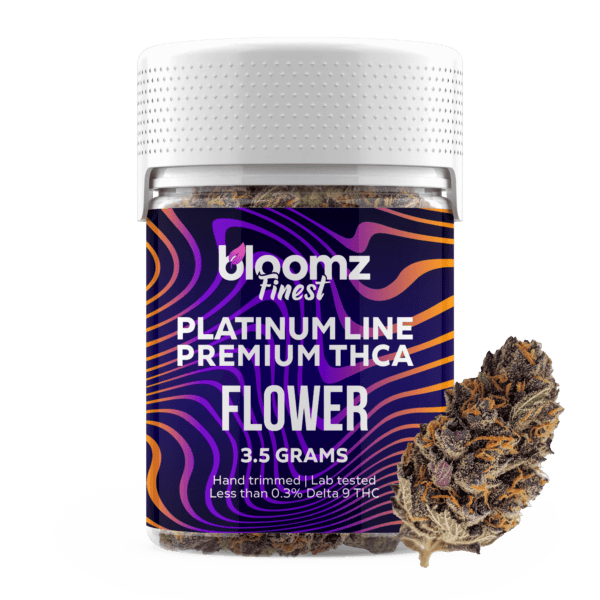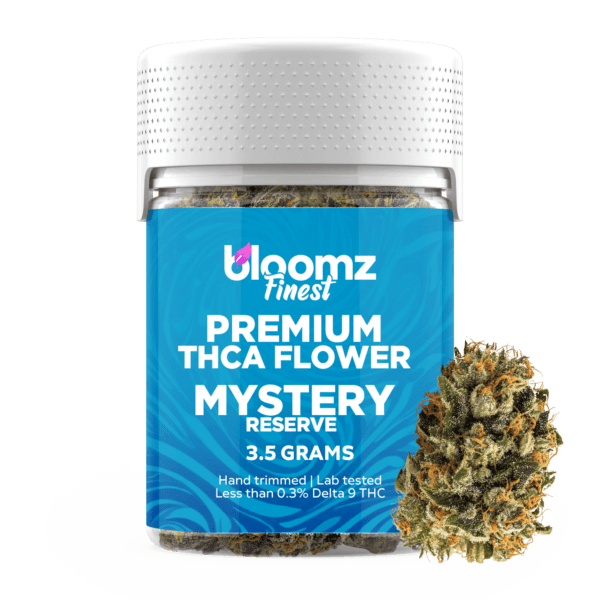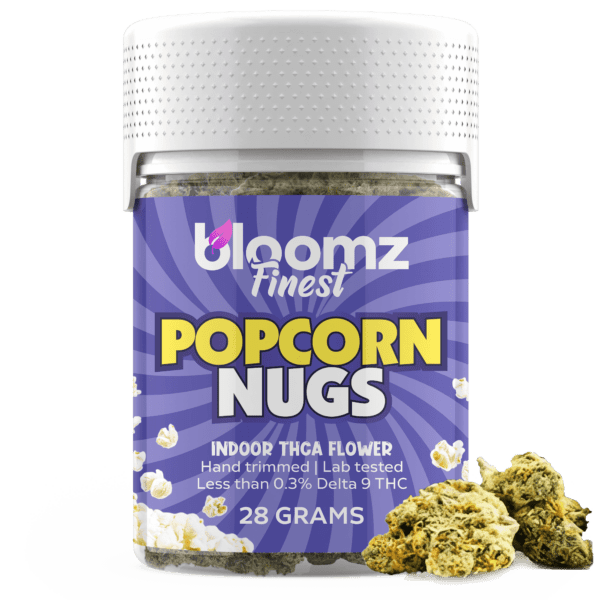In the grand and vibrant bazaar of natural wellness and personal exploration, consumers are now faced with a dazzling spectrum of choices, each promising a unique contribution to the human experience. The aisles are filled with everything from ancient herbal remedies to the latest innovations in botanical science, all vying for our attention. Among this vast selection, two powerful contenders stand out, not as competitors, but as representatives of two entirely different philosophies of being. On one side, we have THC-P flower, a product born from the absolute cutting edge of cannabinoid chemistry, engineered to deliver an experience of profound and overwhelming euphoria that pushes the very limits of perception.
On the other side, we find the steadfast and ancient category of functional mushrooms, revered not for their ability to alter the mind, but for their role in fortifying the body and supporting its foundational systems. This is not a matchup of similar effects; it is a deep and essential exploration of intent, a look at the fundamental choice between seeking a momentary, transcendent peak experience and cultivating a sustained, resilient plateau of daily well-being.
TO BUY THC-P FLOWER CLICK HERE
Recommended products
Why It’s Important to Breakdown the Matchup of THC-P Flower vs. Functional Mushrooms
In a marketplace where novel products emerge at a dizzying pace, the need for fundamental and unambiguous clarification has never been more critical. The comparison between THC-P flower and functional mushrooms is perhaps the most important distinction one can make in the entire alternative products space, as it draws a bright, uncrossable line between profound psychoactivity and non-psychoactive wellness support.
A detailed breakdown is not merely an informative exercise; it is an essential act of consumer education and safety. To confuse these two categories, or to approach one with the expectations of the other, would represent a fundamental misunderstanding that could lead to outcomes ranging from simple disappointment to a deeply unpleasant and frightening experience. This analysis serves to build a clear and solid wall of understanding between two entirely separate worlds.
The most critical reason this breakdown is necessary is to prevent a catastrophic error in expectation and use. THC-P flower is an exceptionally potent intoxicating substance. Its entire purpose is to induce an immediate, overwhelming, and long-lasting psychoactive state—a “high” of immense proportions. Functional mushrooms, conversely, are defined by their complete and total lack of any intoxicating or psychoactive effects.
Their role is that of a daily supplement, intended to work subtly and cumulatively over long periods. A consumer mistakenly purchasing THC-P flower thinking it is a simple wellness product like Lion’s Mane or Reishi could be in for a traumatic, multi-hour ordeal. Conversely, a user seeking the intense bliss of THC-P would be utterly baffled by the complete absence of any immediate feeling from a dose of Cordyceps.
Furthermore, this matchup serves to highlight the vast differences in their legal frameworks and safety profiles, which stem from their different natures. THC-P flower exists in a precarious legal gray area, its legality derived from a contentious interpretation of the 2018 Farm Bill, and its primary safety concerns revolve around the purity of its lab-based synthesis and the immense psychological risks of overconsumption. Functional mushrooms are, in stark contrast, federally legal as food and dietary supplements across the entire United States. Their safety concerns are not about intoxication, but about the quality control of the supplement market—ensuring products are pure, potent, and free from contaminants. Understanding these differences is crucial for navigating both legal risks and health considerations.
Finally, this comparison clearly defines two separate philosophies of integrating natural products into one’s life. THC-P flower is an agent of acute experience, a tool for specific, planned moments of profound recreational or experiential exploration that exists outside the bounds of normal daily function. Functional mushrooms are agents of foundational wellness, designed to be seamlessly integrated into a daily routine—in coffee, in a smoothie, in a capsule—to support the very baseline of that normal daily function. By drawing this distinction, we empower consumers to be intentional with their choices, ensuring they select the right product for the right purpose, and fully appreciate the unique and valuable—but entirely separate—roles that both ultra-potent cannabinoids and supportive fungi can play.
Contender #1: THC-P Flower
In the rapidly advancing frontier of hemp-derived cannabinoids, THC-P flower has emerged as a true titan, a product that pushes the very boundaries of potency and has captured the attention of the most seasoned cannabis enthusiasts. It represents the cutting edge of cannabinoid science, a testament to what is possible when natural botanical forms are enhanced with exceptionally powerful, lab-refined compounds. To the eye, THC-P flower is indistinguishable from the highest-grade cannabis, boasting dense, trichome-covered buds and pungent, complex aromas.
However, its unassuming appearance belies an inner power that far surpasses that of its more common cannabinoid cousins. THC-P flower is not a plant that grows naturally; it is a carefully constructed product designed for an experience of unparalleled intensity, offering a journey into profound euphoria that is reserved for the most experienced and tolerant of users. Its existence is a direct consequence of both a landmark scientific discovery and the ongoing innovation within the legal hemp market.
The incredible power of this product is derived from a single, remarkable molecule: Tetrahydrocannabiphorol (THC-P), which was only recently identified in 2019 by a team of Italian researchers who were analyzing a particular cannabis strain. What they discovered was a naturally occurring analogue of THC that possessed a significantly different molecular structure. The key difference, and the source of its immense strength, lies in its alkyl side chain. While standard Delta 9 THC has an alkyl side chain with five carbon atoms, THC-P boasts a longer chain with seven carbon atoms.
This elongated structure dramatically increases its ability to bind with the CB1 receptors in the human brain—the primary receptors responsible for producing the psychoactive effects of cannabis. According to the initial research, THC-P exhibits a binding affinity for the CB1 receptor that is over 30x stronger than that of Delta 9 THC. This incredible affinity is the scientific explanation for its reputation as the most potent naturally-occurring phytocannabinoid discovered to date.
Recommended products
The creation of THC-P flower is a testament to the sophisticated manufacturing processes developed within the modern hemp industry. It is essential to understand that, like Delta 8 flower, THC-P flower is not a naturally grown product. Because THC-P exists in such minuscule concentrations in the actual cannabis plant, it isn’t feasible to extract it directly. Instead, the potent THC-P distillate used to create these products is synthesized in a laboratory, and then carefully applied to a base of high-quality hemp flower. The precision required in this process is paramount, as even a small miscalculation with such a potent compound could lead to an overwhelmingly intense product:
Sourcing Premium Hemp Flower: The process begins with the cultivation of top-tier, federally compliant hemp flower. This base flower, typically rich in CBD or CBG, is chosen for its excellent bud structure, vibrant terpene profile, and overall quality. The natural aromas and flavors of this premium hemp serve as the foundational canvas for the experience.
Laboratory Synthesis of THC-P: In a highly controlled laboratory setting, expert chemists use a starting material of legal hemp-derived CBD isolate. Through a complex, multi-step chemical process known as isomerization, the molecular structure of the CBD is rearranged to create the THC-P molecule. This is a highly specialized process that requires advanced equipment and expertise to ensure the final distillate is pure and free of unwanted byproducts.
Precision Infusion and Blending: This is the most critical manufacturing step. Due to the extreme potency of THC-P, it is rarely, if ever, applied to flower in its pure form. Instead, the THC-P distillate is typically blended with a less potent cannabinoid, such as Delta 8 THC, to create a more balanced and manageable, yet still incredibly powerful, final product. This carefully calculated blend is then applied to the hemp flower using methods like solventless cryo-infusion or light spraying to ensure a consistent and even coating.
Rigorous Third-Party Lab Testing: For a product this potent, independent verification is non-negotiable for any reputable brand. A sample of the final, infused THC-P flower is sent to an accredited third-party laboratory. The lab performs comprehensive tests to verify the exact potency of THC-P and other cannabinoids, and, just as importantly, to screen for any residual solvents, heavy metals, or other contaminants, ensuring the product is both accurately labeled and safe for consumption.
The market for THC-P flower, while more niche than that of other cannabinoids, offers several categories of products tailored to the experienced user. The primary distinctions between these products lie in the quality of the base hemp flower and the specific formulation of the cannabinoid blend used in the infusion. Given the extreme potency of THC-P, every product in this category should be approached with the utmost caution and respect, as they are all designed to deliver a profoundly powerful experience:
Indoor THC-P Flower: This represents the highest tier of THC-P flower products. It utilizes premium, indoor-grown hemp flower as its base, which provides a dense, visually perfect, and terpene-rich foundation. When infused with the potent THC-P distillate blend, the result is a connoisseur-grade product that offers a symphony of complex aromas and flavors alongside an incredibly intense psychoactive experience.
Outdoor THC-P Flower: For a more budget-conscious option, some brands may use sun-grown, outdoor hemp flower. While the buds might be less aesthetically perfect than their indoor counterparts, they can still serve as an effective carrier for the THC-P distillate. This option provides access to the powerful effects of THC-P at a more accessible price point for experienced users.
THC-P Nugs: This is the general term for the standard, trimmed buds of hemp flower that have been infused with THC-P. These are the most common form of the product, sold by weight in jars or bags. Regardless of the quality of the base flower, any THC-P nug is an exceptionally potent item that requires extremely cautious dosing.
THC-P Moonrocks: Representing the absolute apex of smokable potency in the hemp market, THC-P Moonrocks are an “experts only” product. They are created by taking a high-quality hemp nug, coating it in a sticky layer of a potent distillate blend containing THC-P, and then rolling the entire concoction in a thick layer of CBD or CBG kief. The resulting product is incredibly dense, heavy, and delivers an overwhelmingly powerful experience.
THC-P Pre-Rolls, Blunts & Joints: For convenience, some brands offer pre-rolled versions of their THC-P flower. These provide a ready-to-use option, but they also carry a significant risk for inexperienced users. A single standard-sized joint of this material is far too much for one person in one sitting. Responsible consumption of a THC-P pre-roll involves taking a single, small puff and waiting at least 20-30 minutes to assess the effects.
The use of familiar strain names on THC-P flower products follows the same logic as it does for Delta 8 flower, but the implications are amplified by the cannabinoid’s sheer strength. The strain name—be it an Indica, Sativa, or Hybrid—refers to the genetic profile of the base hemp flower used in the product. The terpenes of this base strain will absolutely influence and “steer” the direction of the experience, but the overwhelming character of the journey will be dictated by the profound potency of the THC-P itself. Think of the base strain as the specific landscape you are traveling through, while the THC-P is the high-speed vehicle propelling you through it at an incredible velocity:
Indica: When an Indica-dominant hemp strain with a relaxing terpene profile is infused with THC-P, the resulting experience is likely to be one of profound, full-body immersion and deep physical relaxation, coupled with an intensely euphoric and introspective mental state. The calming nature of the Indica terpenes may help to ground the overwhelming power of the THC-P, making it a choice for experienced users seeking a powerful, meditative, and couch-locking evening session.
Sativa: Using a Sativa-dominant hemp strain with an uplifting and energizing terpene profile as the base for THC-P flower creates an experience that can be incredibly expansive and cerebral. The stimulating terpenes might direct the intense psychoactivity towards creative thought, profound philosophical musings, and a powerful rush of euphoric energy. This combination is for the most adventurous of users and can be intensely stimulating and mentally active.
Hybrid: Hybrid strains offer a balanced foundation, and when infused with THC-P, they can produce a multifaceted experience of immense power. The effects can encompass both the heavy, blissful body sensations of an Indica and the racing, creative cerebral activity of a Sativa, all amplified to an extraordinary degree by the THC-P. This creates a complex and all-encompassing high that engages both mind and body with incredible force.
The legality of THC-P flower in the United States exists in the same complex and highly contentious gray area as Delta 8 THC, but arguably under even greater scrutiny due to its immense potency. The legal argument for THC-P is that, as a cannabinoid synthesized from hemp-derived CBD, it falls under the protection of the 2018 Farm Bill, which legalized hemp and all its derivatives so long as they contain less than 0.3% Delta 9 THC. However, this position is fragile.
The DEA’s stance on “synthetically derived tetrahydrocannabinols,” combined with the undeniable and powerful psychoactive nature of THC-P, makes it a prime target for regulatory action. Many of the state-level laws that have been passed to ban or restrict Delta 8 THC often use broad language that would also cover other intoxicating, hemp-derived cannabinoids like THC-P. Therefore, consumers must be extremely diligent in checking their local state laws, as this product is illegal in many jurisdictions and exists in a precarious legal position in others.
Recommended products
The purposes for using THC-P flower are centered exclusively on achieving an experience of profound psychoactive intensity. The methods of consumption are standard for cannabis flower, but the approach to dosing must be radically different. The number one rule for consuming THC-P flower is to start with the smallest possible amount and wait for an extended period before considering more. The potency is so high that a standard dose of regular cannabis flower would be an overwhelming and likely unpleasant experience with THC-P. Respect and extreme caution are not just recommended; they are absolutely essential for a positive and safe experience:
Vaping (using a portable or desktop vaporizer): Vaping is an excellent method for THC-P flower as it allows for some degree of temperature control and provides a cleaner inhalation. Crucially, a user should only pack a minuscule amount into their vaporizer—a tiny fraction of a normal bowl—and take a single, small inhalation before waiting at least 20-30 minutes to gauge the full effect.
Smoking: While a classic method, smoking THC-P flower requires immense discipline. Whether using a pipe, bong, or a pre-roll, the approach is the same: take one very small puff, not a full draw. Inhaling deeply as one would with regular cannabis is a recipe for overconsumption. The rapid onset of smoking is a benefit, but it must be paired with extreme moderation.
Cooking/Baking: Making edibles with THC-P flower is possible but is an advanced practice that requires extreme precision. The potency of the flower makes accurate dosing incredibly difficult without laboratory equipment. A tiny miscalculation could result in an edible that is unpleasantly strong and lasts for many hours. This method should only be attempted by the most experienced and cautious of users.
The overall effects of THC-P flower are best described as a familiar THC experience amplified to an extraordinary degree. Users report that it produces a “high” that’s similar in character to Delta 9 THC but is profoundly more potent, intensely euphoric, and significantly longer-lasting. The onset can be surprisingly slow for an inhaled product, sometimes taking up to 30 minutes to fully reveal its strength, which is a primary reason for the high risk of overconsumption.
Once the effects take hold, they can include a powerful, all-encompassing body high that feels deeply relaxing and blissful, combined with a significant and often overwhelming cerebral experience. This mental aspect can be intensely psychoactive, leading to profound shifts in perception, deep introspection, and a powerful sense of wonder. For those with a high tolerance, it can be a transcendent experience of bliss, but for the unprepared or the low-tolerance user, the sheer intensity can be disorienting and uncomfortable.
Pros & Cons
THC-P flower, as a frontier cannabinoid product, comes with a profile of extreme advantages and equally significant risks. Its entire identity is built on its unparalleled potency, a quality that is either its greatest asset or its most formidable drawback, depending entirely on the user’s experience, tolerance, and intention.
Pros:
Unmatched Potency and Strength: For experienced cannabis users with a very high tolerance, THC-P offers a novel and powerful experience that can transcend the limits of traditional THC. It provides a new level of intensity that many seasoned enthusiasts are seeking.
Profound Feelings of Euphoria: The intense interaction with the CB1 receptors can lead to a powerful and profound sense of euphoria and bliss. Users often report an overwhelming sense of well-being and happiness that is much more pronounced than with other cannabinoids.
Efficiency in Dosing: Because it is so incredibly potent, only a very small amount of material is needed to achieve a significant effect. This means that a small purchase can last a very long time, making it an efficient choice for those who require high doses.
Long-Lasting Experience: The effects of THC-P are reported to last significantly longer than those of Delta 9 THC. This extended duration can be desirable for users who want a prolonged experience without needing to re-dose frequently.
A Novel Cannabinoid Journey: For the connoisseur who has explored a wide range of strains and cannabinoids, THC-P offers something genuinely new and different. It provides a unique journey into the upper echelons of what cannabinoids can do.
Legal Accessibility (in some areas): In states that have not explicitly banned intoxicating hemp derivatives, THC-P flower can be legally purchased. This provides a legal channel to an experience that is far more potent than what is available in many regulated Delta 9 THC markets.
Potential for Deep Introspection: The sheer intensity of the THC-P experience can often lead to a state of deep introspection and contemplative thought. For some users, this can be a powerful tool for self-reflection and creative thinking.
Represents Cutting-Edge Science: The discovery and synthesis of THC-P are at the forefront of cannabinoid research. Engaging with this product is, in a sense, experiencing the very latest developments in the field of cannabis science.
Synergy with Natural Terpenes: THC-P flower combines the raw power of the synthesized cannabinoid with the nuanced aromatic and flavorful profiles of the high-quality hemp flower it is infused into, creating a complex and multi-sensory experience.
Product Variety Available: Despite being a niche product, THC-P is available in several forms, including various infused flower strains, potent moonrocks, and convenient pre-rolls, offering a range of options for the experienced user.
Cons:
Extreme Risk of Overconsumption: This is the most significant con. The immense potency and often delayed onset make it incredibly easy to take too much, which can lead to a highly unpleasant, overwhelming, and uncomfortable experience. THC-P flower is strictly not for beginners or users with a low tolerance.
Precarious and Ambiguous Legal Status: THC-P exists in a volatile legal gray area. It is explicitly illegal in many states, and its federal legality under the Farm Bill is heavily contested. Consumers face significant legal risks depending on their location.
Lack of Scientific Research: As a very recently discovered compound, there is a significant lack of long-term research on the health and safety effects of THC-P. Users are engaging with a powerful substance whose full pharmacological profile is not yet well understood.
Unregulated Market and Safety Concerns: The market for THC-P is largely unregulated, leading to a high variance in product quality. There are risks of inaccurate potency labeling and the presence of harmful residual solvents from the synthesis process, making third-party lab reports absolutely essential.
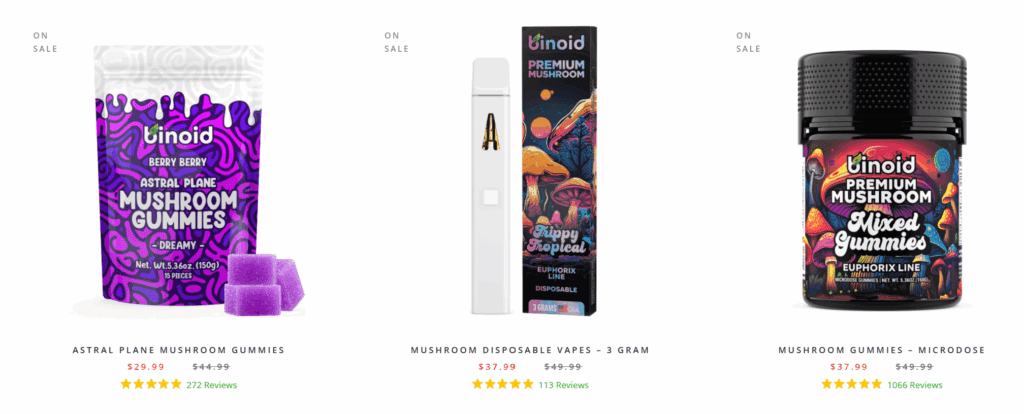
Contender #2: Functional Mushrooms
Stepping into the spotlight from the rich, diverse, and often mysterious world of mycology, functional mushrooms represent a category of fungi valued not for their psychoactive properties, but for their deep well of compounds believed to support overall health and vitality. These are the quiet powerhouses of the fungal kingdom, the great communicators and recyclers of nature, working silently beneath the forest floor to sustain the entire ecosystem. This foundational, supportive role in nature mirrors their celebrated function within the human body. They are distinct from the culinary mushrooms we find in the grocery aisle and worlds apart from their psychedelic cousins, which often command more dramatic headlines.
Functional mushrooms are nature’s tiny biochemical factories, producing a wealth of bioactive compounds that have been revered by traditional wellness practices for centuries as profound allies in the quest for balance and longevity. Their re-emergence into the mainstream wellness conversation is a testament to a growing desire for natural, holistic approaches to well-being, focusing on balance, resilience, and foundational support rather than immediate, perceptible shifts in consciousness. They are the steady, reliable allies in a long-term wellness journey, working subtly in the background to help our bodies perform at their best.
What defines “functional mushrooms” is their rich array of bioactive compounds that interact with the human body in various beneficial ways, without inducing any psychoactive or intoxicating effects. These fungi are packed with complex polysaccharides, particularly beta-glucans, which are renowned for their ability to interact with and support the body’s innate defense systems. Beyond these, functional mushrooms also contain a wealth of other molecules like antioxidant-rich triterpenes, sterols, cordycepin, and unique enzymes, all of which contribute to their holistic effects.
These compounds work together in a complex synergy, but crucially, they are all entirely non-intoxicating and will not produce a “high” or any form of altered perception. Their purpose is primarily adaptogenic and supportive, a concept that describes their believed ability to help the body adapt to various internal and external stressors in a non-specific way, thereby promoting a state of internal balance, or homeostasis. The experience of using functional mushrooms is not one that is felt in minutes or hours with a distinct onset, but rather is integrated into the body’s systems over extended periods of consistent use, much like a long-term conditioning program for your overall vitality.
The history of functional mushrooms stretches back thousands of years, deeply embedded in the traditional medicine systems of East Asia, particularly China and Japan, but also in Siberia, North America, and parts of Europe. Records from the ancient Chinese text Shen Nong’s Divine Farmer’s Materia Medica, dating back over 2,000 years, detail the use of species like Reishi (Lingzhi in Chinese) as “mushrooms of immortality,” placing them in the highest category of “superior herbs” reserved for emperors and royalty due to their rarity and perceived profound influence on vitality and longevity.
In Taoist traditions, Reishi was sought after to nourish the “Shen,” or the spirit. Similarly, Cordyceps has a long history in Traditional Chinese Medicine (TCM) and Tibetan medicine, often used to support stamina and overall vigor at high altitudes. Even in ancient Europe, the Greek physician Hippocrates documented the use of the tinder fungus (Fomes fomentarius) around 450 BCE for its valuable properties. This ancient wisdom, passed down through generations of herbalists and practitioners, forms the bedrock of modern interest, providing a testament to their enduring perceived value long before modern science could begin to analyze their complex chemistry.
The world of functional mushrooms is remarkably diverse, with each species offering a unique profile of bioactive compounds and traditional uses. While many edible mushrooms provide general nutritional benefits, these specific “functional” varieties are distinguished by their higher concentrations of unique compounds that contribute to particular supportive qualities. They represent a fascinating natural pharmacy, each a testament to the intricate biochemical processes occurring within the fungal kingdom, contributing to a holistic approach to daily vitality and allowing for a highly personalized approach to wellness.
Reishi (Ganoderma lucidum): Known as the “Mushroom of Immortality” and revered in TCM as a “spirit calming” herb, Reishi is a striking, woody polypore mushroom with a glossy, varnished cap. Due to its tough texture and intensely bitter taste, it is almost exclusively consumed as an extract or tea. It is most commonly associated with promoting a sense of calm, centeredness, and relaxation, making it a popular choice for evening rituals. Its adaptogenic qualities are prized for helping the body and mind cope with the demands of a hectic lifestyle, supporting a sense of balance and preparing the body for restful sleep cycles.
Lion’s Mane (Hericium erinaceus): This unique mushroom is instantly recognizable, appearing as a large, white, shaggy mass of cascading, icicle-like spines. When cooked, it has a delicate, savory flavor often compared to crab or lobster. Traditionally used by Buddhist monks to aid in focus and concentration during meditation, Lion’s Mane is the quintessential mushroom for supporting cognitive function and mental clarity. It contains unique compounds known as hericenones and erinacines, which are the focus of scientific interest regarding their role in supporting nerve growth factor (NGF), a key protein for brain cell health.
Cordyceps (Cordyceps sinensis and Cordyceps militaris): Famous for its energizing properties, Cordyceps has a fascinating history, though today’s supplements use the sustainably cultivated C. militaris species. Traditionally used to enhance stamina, lung capacity, and endurance, Cordyceps is now a favorite among athletes and active individuals for supporting physical performance and vitality. It is believed to support the body’s natural production of adenosine triphosphate (ATP), the core molecule of cellular energy, providing a smooth, sustained energy boost without the jitters associated with stimulants.
Chaga (Inonotus obliquus): Chaga presents a rugged exterior, growing not as a typical mushroom but as a hard, black, crusty sclerotium on birch trees in cold climates. This dense mass is a powerhouse of antioxidants and contains betulinic acid, a compound it concentrates from the birch tree’s bark. Traditionally harvested and brewed into a tea in Siberia and other northern regions as a general wellness tonic, Chaga is renowned for its role in supporting the body’s natural defense systems and promoting overall resilience, making it a valuable ally during seasonal changes.
Turkey Tail (Trametes versicolor): Named for its fan-like shape and vibrant, concentric stripes of color, this is one of the most common and visually beautiful mushrooms. It is also one of the most extensively researched functional mushrooms in modern science. It is packed with specific, protein-bound polysaccharides known as polysaccharide-K (PSK) and polysaccharide-peptide (PSP), which have been the subject of numerous studies. Due to these compounds, Turkey Tail is almost exclusively associated with providing powerful, foundational support for a robust and healthy immune system.
Shiitake (Lentinula edodes): Perhaps the most famous mushroom on this list from a culinary perspective, Shiitake is a delicious and savory ingredient that holds a revered place in many Asian cuisines for its rich, umami flavor. However, beyond its wonderful taste, it is also a potent functional mushroom with a long history of use in traditional medicine. It contains a powerful polysaccharide called lentinan, as well as eritadenine, and is a rich source of B vitamins, supporting cardiovascular health and a healthy, vigorous immune system.
Maitake (Grifola frondosa): Known affectionately as the “Hen of the Woods” in the West and the “Dancing Mushroom” in Japan (as people would supposedly dance with joy upon finding it), Maitake grows in large, feathery clusters at the base of oak trees. It is prized for its rich, earthy flavor and its robust, meaty texture. Functionally, it is celebrated for containing a unique, complex polysaccharide known as the Maitake D-fraction, and it is most often associated with supporting a healthy metabolic function and promoting a balanced immune response.
The modern wellness industry has made consuming functional mushrooms easier and more convenient than ever before, moving far beyond the traditional method of brewing teas from dried fungi. A vast array of innovative products now exists, allowing individuals to seamlessly integrate the benefits of these mushrooms into their daily routines in a form that suits their lifestyle and taste preferences. This diversity of product types has been a key driver of their recent explosion in popularity, transforming ancient remedies into accessible and often delicious modern supplements and foods.
Powder: This is one of the most versatile forms, typically consisting of a finely ground mushroom extract. It’s crucial to choose an “extracted” powder (using hot water, alcohol, or both) to ensure the bioactive compounds are bioavailable, as the human body cannot easily break down the raw chitin in mushroom cell walls. These powders can be easily added to smoothies, coffee, tea, soups, or even baked goods, allowing for flexible dosing.
Edibles (Gummies and Bars): For ultimate convenience and palatability, functional mushrooms are now widely available in delicious edible forms. Gummies offer a pre-measured, tasty, and chewable dose, completely masking any earthy or bitter flavors and making daily supplementation feel like a pleasant treat. Similarly, nutrition bars and chocolate bars are often infused with mushroom extracts, providing a functional boost to a daily snack.
Tinctures: Tinctures are highly concentrated liquid extracts made by soaking the mushrooms in a solvent like food-grade alcohol or glycerin to pull out the active compounds. A “dual-extraction” tincture uses both hot water and alcohol to capture both water-soluble polysaccharides and alcohol-soluble triterpenes. They are typically taken sublingually (under the tongue) for rapid absorption, offering a potent and precise dosing method.
Capsules: For individuals who prioritize a no-fuss, tasteless, and supremely convenient option, capsules are the perfect solution. They contain a precise, pre-measured dose of powdered mushroom extract, offering a straightforward way to get a consistent daily amount without any preparation or flavor considerations. This is a popular choice for those integrating mushrooms into a daily regimen alongside other vitamins and supplements.
Beverages: The functional beverage market has exploded with mushroom-infused products, with mushroom coffee being the clear frontrunner. These products often blend extracts like Lion’s Mane and Cordyceps with high-quality coffee beans to provide focused, sustained energy without the jitters. Beyond coffee, one can find mushroom teas, nourishing hot cocoa blends with Reishi, and ready-to-drink wellness shots and elixirs.
Dietary Supplements: This is the broad regulatory category under which most functional mushroom products are sold in the United States, governed by the Dietary Supplement Health and Education Act of 1994 (DSHEA). This classification means they are intended to supplement the diet, must feature a “Supplement Facts” panel, and are legally prohibited from making claims to treat or cure any disease, though “structure/function” claims are permitted.
Pre-Workout Products: Capitalizing on the well-documented traditional use of Cordyceps for energy and stamina, many sports nutrition brands now incorporate this and other functional mushrooms into their pre-workout formulas. These products aim to provide a natural, non-stimulant boost to athletic performance and oxygen utilization (VO2 max), often blended with other athletic support ingredients like beta-alanine or creatine, appealing to athletes seeking a holistic and natural edge.
The synergy between the plant and fungal kingdoms is being explored in exciting ways, particularly through the combination of functional mushrooms with various non-psychoactive cannabinoids. This trend is rooted in the idea of creating holistic wellness products that leverage the complementary properties of both. For example, a product designed for evening relaxation might blend the calming-associated properties of Reishi mushroom with the soothing effects of CBD and CBN, aiming to create a powerful synergy for unwinding before sleep.
A blend for daytime focus could combine the cognitive-supporting reputation of Lion’s Mane with the alertness-promoting properties of CBG. Even full-spectrum products in legal markets might include micro-doses of THC to achieve the “entourage effect,” where the various compounds work together to create a more comprehensive effect than any single one could alone. These thoughtful combinations aim to provide targeted support for specific wellness goals, creating sophisticated, multi-faceted formulas for the discerning modern consumer.
One of the most significant and straightforward aspects of functional mushrooms is their legal status in the United States. They are unequivocally legal at the federal level and in all 50 states. This is because they are classified as food items or dietary supplements under the Dietary Supplement Health and Education Act of 1994 (DSHEA) and, crucially, contain no psychoactive or otherwise controlled substances. You can freely purchase Reishi, Lion’s Mane, Cordyceps, and other functional mushroom products online, in grocery stores, at health food shops, and from major supplement retailers without any legal concern. This clear and unambiguous legality stands in stark contrast to the complex, shifting, and often risky legal landscape of HHC flower. The safety and accessibility that come with this legal status are major factors in their widespread adoption into mainstream wellness culture, providing consumers with peace of mind and the ability to openly incorporate these beneficial fungi into their health regimens.
The overall effects of functional mushrooms are perhaps their most defining and misunderstood feature, especially when juxtaposed with a potent psychoactive substance like THCA flower. The effects are not immediate, perceptible, or intoxicating in any way. You will not feel a “high,” euphoria, or any altered state of consciousness after consuming them. Instead, their effects are subtle, cumulative, and supportive, working gently in the background to help the body’s intricate systems function optimally and maintain balance. The goal is to build resilience and vitality over time through consistent, daily use.
The experience is much like watering a plant; you don’t see the growth happen in the moment you pour the water, but with consistent care, the plant becomes stronger and more vibrant. Similarly, after weeks of consistently taking Cordyceps, an individual might notice more sustained energy during workouts. Someone using Lion’s Mane daily might find their focus gradually sharpening. The “effect” is not a fleeting sensation you get from the mushroom; it’s an enhanced state of well-being you arrive at with the mushroom as a faithful, long-term partner in your health journey.
Pros & Cons
Delving into the world of functional mushrooms reveals a spectrum of compelling advantages and a few considerations that users should be aware of. Their non-psychoactive nature, historical reverence, and broad integration into wellness routines make them a distinct category. Understanding both their strengths and their limitations is crucial for anyone looking to incorporate these powerful fungi into their daily life.
Pros:
Non-Psychoactive Nature: Perhaps their most significant advantage, functional mushrooms do not induce any altered state of consciousness, making them suitable for daily use without impairing mental clarity or driving ability. This allows for consistent integration into any lifestyle, from professional settings to parenting.
Broad Spectrum of Wellness Support: Each functional mushroom offers a unique profile of beneficial compounds that contribute to different aspects of well-being, from supporting immunity and cognitive function to promoting vitality and calm. This diversity allows for targeted support based on individual needs.
Entirely Legal and Widely Accessible: Unlike many other natural compounds, functional mushrooms are fully legal across the United States and most of the world. This means they are readily available in various reputable retail environments, ensuring easy access and promoting transparency in sourcing and manufacturing.
Historical and Traditional Use: Many functional mushrooms boast centuries, and in some cases millennia, of documented use in traditional medicine systems. This deep historical precedent lends credibility and a sense of timeless wisdom to their modern applications, linking users to ancient practices.
Subtle and Cumulative Effects: Their benefits often build over time with consistent use, offering a sustained and foundational approach to wellness rather than a fleeting, intense experience. This makes them ideal for individuals seeking long-term physiological support and a gentle sense of balance.
Versatility in Consumption: The vast array of product types—powders, tinctures, edibles, capsules, and infused beverages—makes functional mushrooms incredibly versatile. This allows consumers to choose the most convenient and enjoyable method for integrating them into their daily routines.
No Risk of Failed Drug Tests: As functional mushrooms do not contain cannabinoids or any scheduled psychoactive compounds, there is absolutely no risk of them causing a positive result on a drug test. This provides peace of mind for individuals subject to workplace or other screening.
Adaptogenic Qualities: Many functional mushrooms are considered adaptogens, meaning they help the body adapt to various stressors and maintain equilibrium. This balancing effect can contribute to an overall feeling of resilience and well-being in the face of daily challenges.
Rich in Bioactive Compounds: These fungi are packed with beta-glucans, triterpenes, antioxidants, and other unique compounds that interact with various bodily systems to support natural functions. This complex biochemical profile is the basis for their wide-ranging beneficial properties.
Potential for Synergistic Blends: Functional mushrooms can be safely and effectively combined with other natural compounds, including various cannabinoids and terpenes, to create synergistic blends. This allows for customized formulations that target specific wellness goals with enhanced efficacy.
Cons:
Lack of Immediate, Perceptible Effects: For those seeking a rapid or dramatic shift in perception or mood, functional mushrooms may be disappointing. Their effects are subtle and build over time, which can lead to a perceived lack of impact for individuals accustomed to more overt sensations.
Inconsistent Product Quality: While the market is growing, product quality can vary significantly. Some products may contain inert mycelium or fillers, or may not use proper extraction methods, leading to a lower concentration of active compounds. Consumers must research brands to ensure they are getting potent, bioavailable extracts.
Earthy Taste: Some individuals find the natural, earthy, or sometimes bitter taste of mushroom powders or tinctures unpalatable. While many products mask this taste effectively, it can be a barrier for those who are sensitive to flavors when consuming raw powders or less refined extracts.
Cost for Consistency: To experience the full, cumulative benefits, functional mushrooms often require consistent, daily use over an extended period. High-quality, potent extracts can be relatively expensive, making a long-term regimen a notable financial investment for some consumers.
How to Go About Choosing Which Option
The choice between THC-P Flower and functional mushrooms represents the ultimate divergence in consumer intention within the natural products space. This is not a decision between two similar options, but a fundamental choice between two entirely different philosophies of personal wellness and experience. To put it simply, there is virtually no overlap in their purpose or effects. The decision-making process, therefore, is not one of preference for a particular flavor or format, but a clear-cut determination of one’s primary goal: are you seeking to profoundly alter your immediate state of consciousness, or are you seeking to build a stronger foundation for your everyday state of being?
If your objective is to experience an immediate, powerful, and intensely euphoric psychoactive event, then THC-P flower is the product designed, manufactured, and marketed for that specific purpose. It is a tool for acute, recreational, or experiential use, intended to take the user far from their baseline of normal consciousness for a number of hours. This path is for the experienced user who understands and desires an overwhelming sensory and mental high and is prepared for its intensity. It is about choosing a temporary, transcendent experience.
Conversely, if your objective is to support your body’s long-term health and resilience, to enhance your daily focus, to foster a sense of calm, or to bolster your vitality without any intoxication whatsoever, then functional mushrooms are the only logical choice between the two. They are a tool for chronic, daily use, intended to be integrated into a healthy lifestyle to subtly and cumulatively optimize your baseline state of being. This path is for the individual seeking to invest in their foundational wellness through patience and consistency. It is about choosing to fortify the very reality you experience every day. The choice is less of a competition and more of a clarification of purpose.
|
Feature |
THC-P Flower |
Functional Mushrooms |
|---|---|---|
|
Primary Purpose |
Intense, profound recreation and psychoactive experience. |
Foundational wellness, long-term support, and vitality. |
|
Psychoactivity |
Yes (Extremely High) |
No (Entirely Non-Psychoactive) |
|
Onset of Effects |
Immediate to 30 minutes; acute and powerful. |
Cumulative (weeks to months of consistent use); subtle and foundational. |
|
Mechanism of Action |
Cannabinoid (Ultra-potent CB1 Receptor Agonist) |
Adaptogenic, nutritive (interacts with immune, nervous, metabolic systems) |
|
Legality (Federal) |
Contentious Gray Area (Derived from hemp but highly intoxicating) |
Fully Legal (Classified as food/dietary supplement) |
|
Target User |
Advanced, high-tolerance cannabis users ONLY. |
Any adult seeking long-term wellness support. |
|
Primary Risks |
Extreme psychological overwhelm, unregulated market quality, legal ambiguity. |
Inconsistent product quality, potential allergies, lack of immediate effect. |
|
Lifestyle Integration |
For specific, planned moments of intense experience. |
For seamless, daily integration into a wellness routine (e.g., coffee). |
The Architect and The Astronaut
In the grand project of building a fulfilling life, we often play different roles. Sometimes, we are the architect, meticulously laying bricks day by day, strengthening the foundation, and ensuring the long-term integrity of our physical and mental home. This is the path of the functional mushroom user, a journey of patient, consistent, and foundational work. At other times, we are the astronaut, yearning to strap into a powerful vessel and launch into the cosmos for a breathtaking, temporary glimpse of an entirely different reality, a profound and euphoric view from outside our everyday world. This is the path of the THC-P explorer.
Neither role is inherently better, but confusing the two can lead to disaster. The true wisdom lies in knowing which journey you’re embarking on today, and even choosing the right tool—and the right mindset—for the mission ahead.
TO BUY THC-P FLOWER CLICK HERE
Recommended products
-
THCA Flower – Indoor Exotics – Gold Line
$37.99$69.99 -
THCA Flower – Platinum Line
$49.99$79.99 -
THCA Flower – Mystery Reserve
$41.99$79.99 -
THCA Smalls
$149.99$256.99

